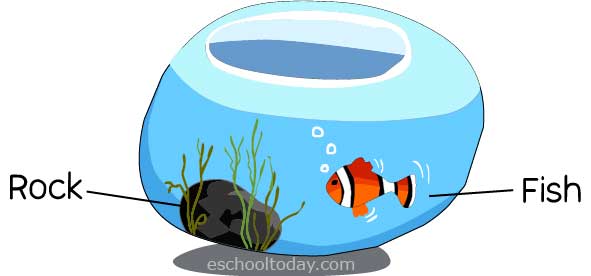- Characteristics of living things
What do living things have in common?
Let us start by considering this aquarium illustration below.

In the aquarium, what we see is a fish and a rock. Many things go on inside of the fish that makes it move, grow, and behave the way it does. The piece of rock does nothing but stays there. The rock can remain there for thousands of years, with or without the water, but the fish will not be able to do so. Without water, it will die at some point.
What is the difference between the fish and the rock? The fish is a living organism, but the rock is not. There are five characteristics of life that the fish has, which the rock does not have.
It is made up of cells
It obtains and uses energy
It grows
It reproduces
It responds to changes in its environment.
These living characteristics are not for a fish alone. It is the same for all living things (plants and animals). It also includes very tiny organisms that our eyes cannot see. They are known as microorganisms and include viruses, bacteria, and fungi. Because we do not see microorganisms with our eyes, it is even harder to know if they have all the characteristics of living things. We will see more examples in the next pages.
It is possible to have a non-life object display one or two of the characteristics of life. For example, a cloud can grow in size and move from one place, but it is not a living organism.
That means for something to be classified as a living organism it must display ALL of the characteristics listed above.
Now, we shall take a closer look at each of the characteristics.
